A Pyramid In Scotland? All You Need To Know Before Visiting
Explore One Of Scotland’s Best Kept Hidden Gems
Scotland is famous for its stunning landscapes, rich history, vibrant culture, and, of course, its famously soggy weather. But what about its lesser-known treasures? Among the endless places to explore, tucked between rolling hills and picturesque glens, could there really be a pyramid hidden in Scotland?
When you think of pyramids, your mind probably drifts to Egypt’s grand structures or Mexico’s ancient ruins. But here’s a surprise—Scotland has its own pyramid!
Our kids were thrilled when they learned about this unexpected gem, so we set off on a family road trip to the Cairngorms National Park to uncover this fascinating site and its unique story

Scotland’s Pyramid Hike
Free – Family-friendly – Short Hill Walk
Book car hire from Rentalcars
Family-friendly accommodation from Booking.com
What is the Pyramid in Scotland?
Known as “Scotland’s Secret Pyramid,” this striking granite cairn stands 35 feet tall, its polyhedron shape making it a truly unique sight. Cairns have long been used across Scotland’s rugged hills and glens as stone markers for important locations or events, blending history with the landscape.
This particular cairn holds a romantic legacy having been built by Queen Victoria to honour her deep, enduring love for Prince Albert. It still serves as a timeless tribute to their bond.
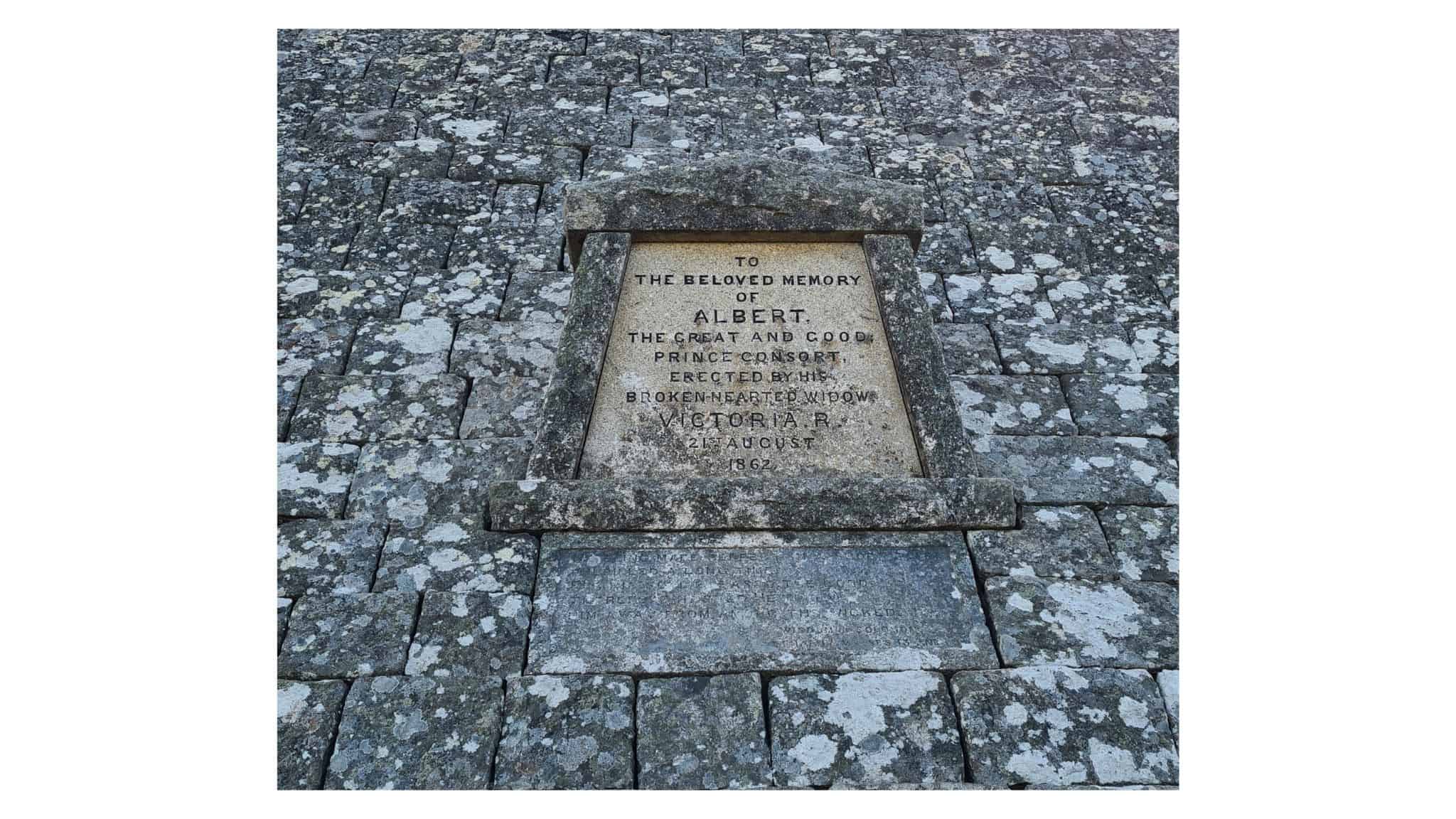
Scottish Pyramid: History
Scotland’s Pyramid, also known as Prince Albert’s Cairn, was erected in memory of the late Queen Victoria’s husband, Prince Albert, in the Balmoral Royal Estate in 1862.
The pyramid is the largest and most impressive of several cairns, built to commemorate members of the Royal Family and significant events in their lives, such as births, deaths and marriages.
The estate has been a Royal residence for the British Royal Family for many years.
Prince Albert and Queen Victoria purchased Balmoral Estate as a retreat from their busy London life. Albert was actively involved in transforming the estate, including constructing the new Balmoral Castle in the Scottish Baronial style, which still stands today. He also played a role in developing the estate’s landscape, gardens, and forestry.
Prince Albert’s Cairn symbolises the enduring connection between the British Royal Family and Balmoral Estate. It is a testament to Prince Albert’s profound impact on the estate and his enduring love for Scotland.
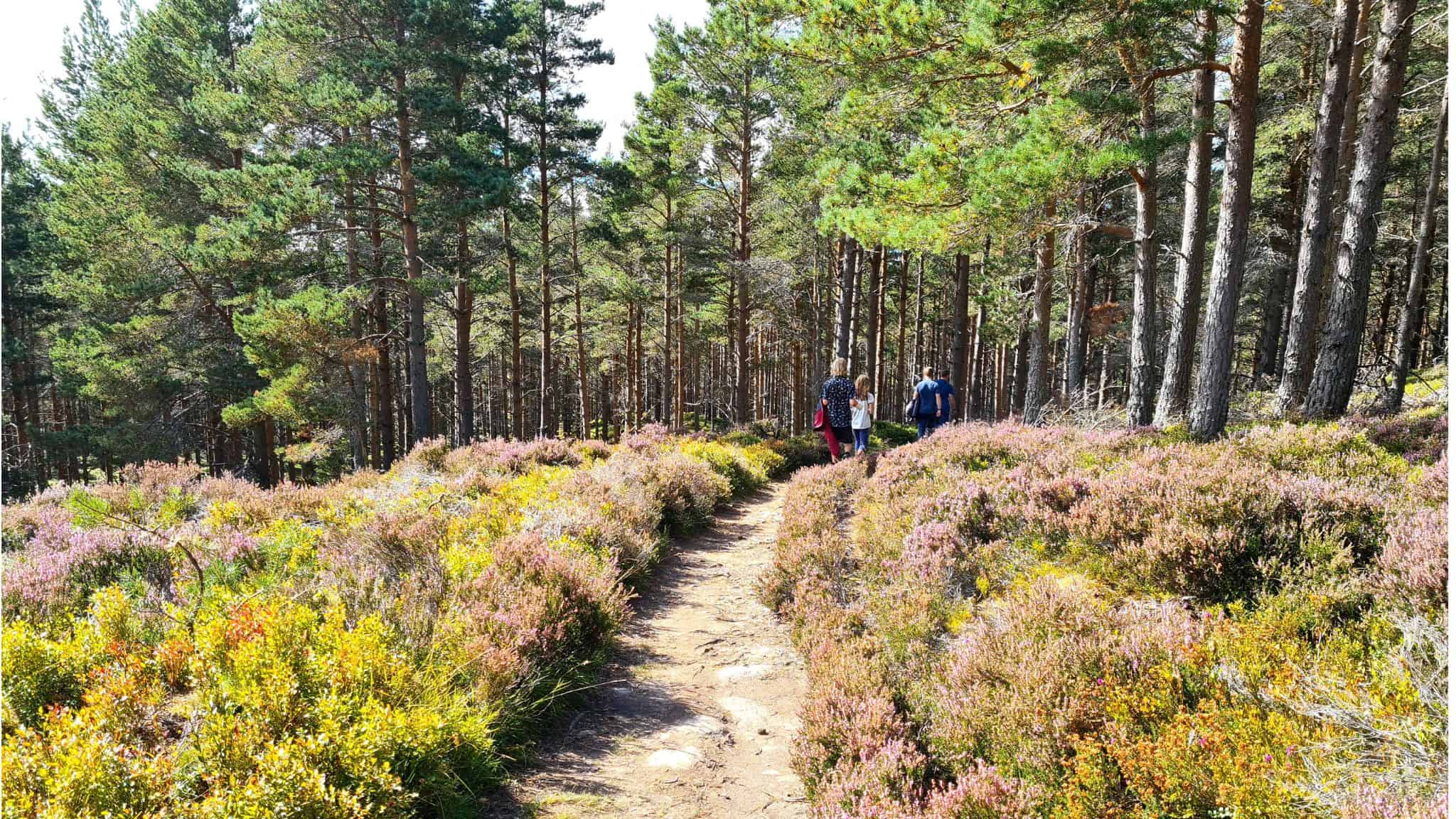
Pyramid In Scotland: How to visit
Scotland’s Pyramid is on the Balmoral Estate, in the heart of the Cairngorm National Park and is just one of many great things to do in Scotland with kids. Although visible from a distance, you are unlikely to stumble across it without following the path.
Accessing The Pyramid: by Car
The trail to the Pyramid can be reached by car in under 2 hours from Inverness, Aberdeen, Perth or Dundee. Having a traditional roadmap on hand can help give you a more comprehensive view of your route options, and for use in case, your sat-nav or phone loses signal.
The routes have spectacular scenery with ancient pine forests, rolling hills and craggy mountains, lending themselves to an enjoyable drive.
It is always worth checking the Scottish weather forecast before you travel. The roads can be prone to closure due to flooding and snow, especially during the autumn and winter.
Parking for the Albert’s Pyramid Walk is in the car park next to the A93 at Crathie.
Note: Bring plenty of water and ensure you have packed appropriate clothing, especially in autumn and winter. There are no toilets on the trail, so encouraging your kids to use the ones in the visitor centre car park.
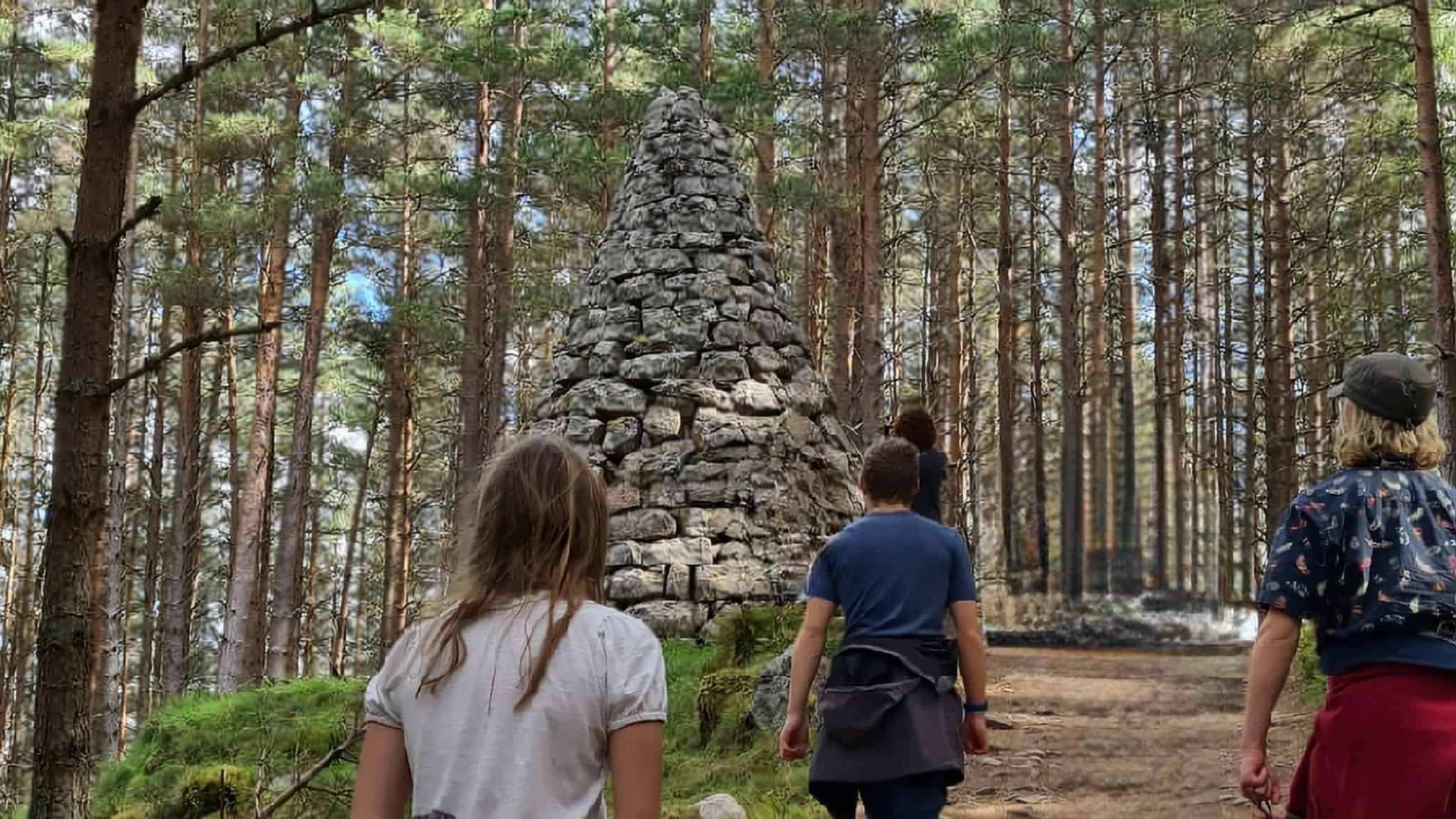
Accessing Prince Alberts Pyramid walk
The hike starts from Crathie car park. From there, you cross the River Dee by the stunning green Iron Bridge, designed by Isambard Kingdom Brunel and built-in 1857. In front of you are the main gates for Balmoral Castle. You should follow the road to the left for around 800m. There is no charge to visit the pyramid in Scotland.
Once you reach the sign for the distillery, turn right and head up the hill. Take another right after 100m, crossing a small bridge into Easter Balmoral village. Turn immediately left and continue uphill until you see the signpost (pictured below!) marked ‘To Prince Albert’s Cairn’.
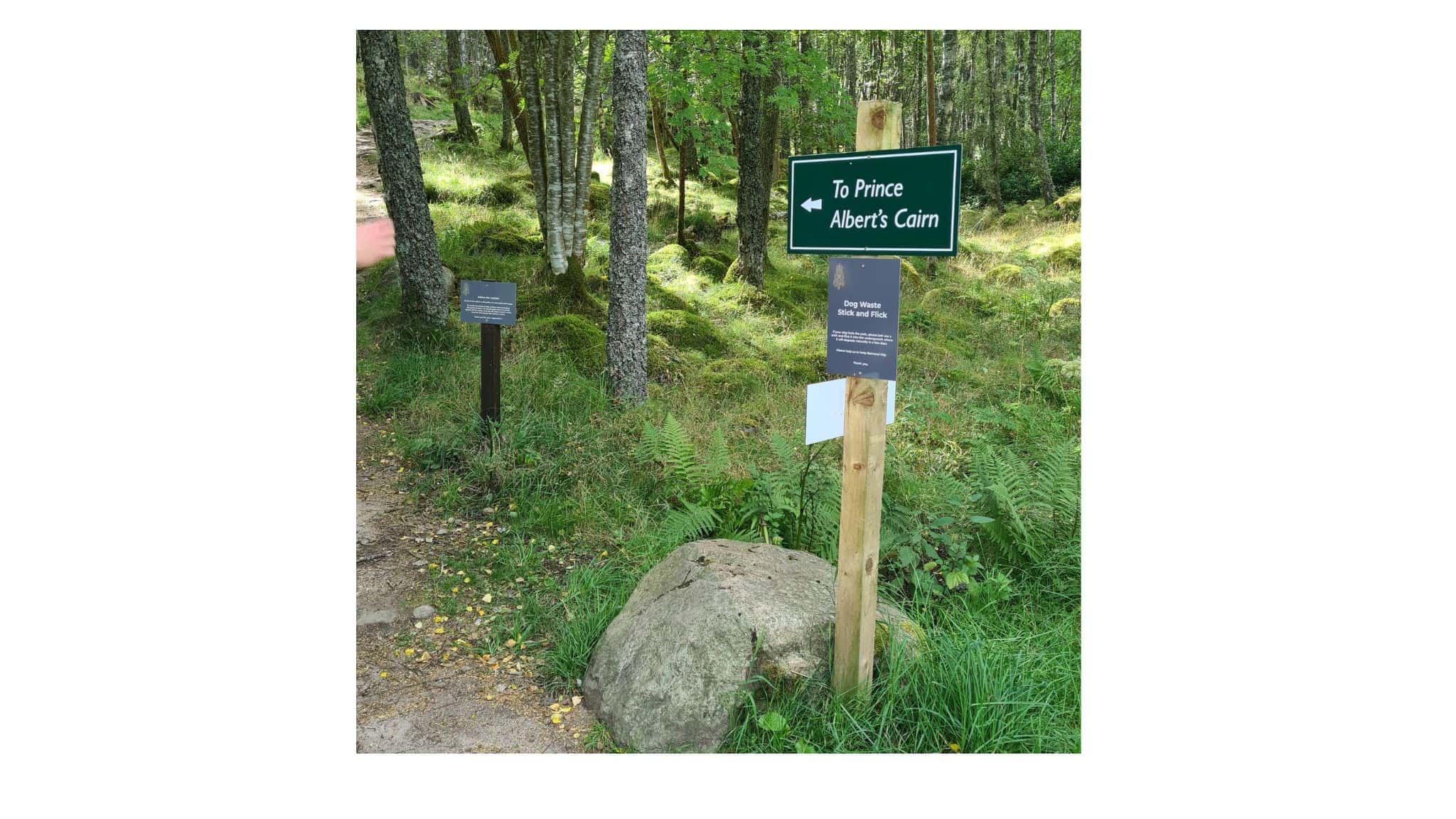
Plenty of animals call this forest home. You might be lucky to spot the elusive red squirrel scurrying up one of the native pines. Capercaillie, black grouse, golden eagles, wildcats, osprey, mountain hares and ptarmigan can also be seen!
We saw lots of red squirrels in early September but were not lucky enough to glimpse a magnificent Red Deer Stag, which are known for their regal-looking antlers.
Continue following the well-maintained footpath up the hill, passing an impressive memorial cairn. To reach your objective, the Prince Albert Cairn, colloquially known as ‘The Scottish Pyramid’.
The pyramid is a perfect spot to take in the surrounding landscape while having a picnic.
You can either retrace your steps to the car park or, as we did, descend the other side of the hill onto a wide, compacted track. Follow the route downhill for approximately 300m, where it splits. Turn left here and continue downhill to a wooden gate.
Proceed through the wooden gate and keep walking downhill until you arrive back in Easter Balmoral. Leave the Estate as you entered, returning to the car park.
Full Circular Walk of the Cairns
An extended, full circular route takes in all of the cairns. It will take most families between 2 and 3 hours to complete.
The route is not well marked, and the paths can be boggy and wellies or waterproof boots with gaiters may be required. You’ll need a moderate degree of fitness to complete the hike.
Note: Access to the full circular walk is not possible when the King is in residence.
Is it worth visiting the Pyramid in Scotland?
Deciding whether to visit Scotland’s pyramid really comes down to your family’s interests. If you’re passionate about exploring the outdoors, immersing yourself in nature, and diving into history and culture, this could be an unforgettable and educational outing for both kids and adults alike.
Our kids were thrilled to uncover this hidden gem nestled in the woods, and we found it well worth the trip. Just keep in mind, you likely won’t have it all to yourself!
We made the journey on a sunny September day. After catching a glimpse of the King and Prime Minister at Crathie Kirk, we took a walk to Prince Albert’s Pyramid. The warm glow of early autumn made the experience magical, though we couldn’t help but think how different it might have been in a downpour!
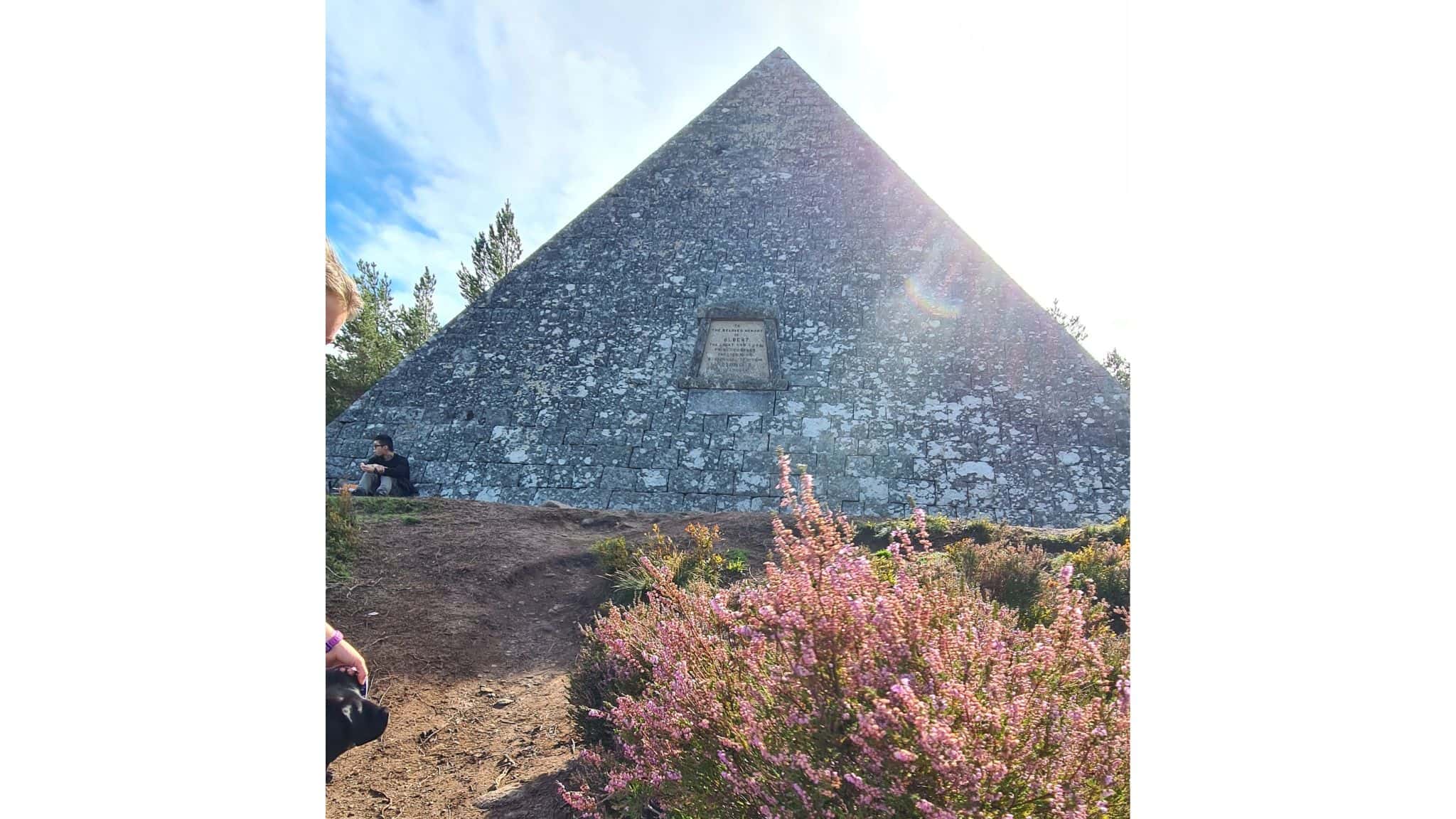
Visiting Cairngorms National Park
The Cairngorms National Park is an area of outstanding natural beauty, with wide range of diverse activities for families of all ages, including mountain biking, kayaking and family-friendly hikes.
It is also a nature lovers paradise with habitats ranging from marshlands and rivers to lochs and sub-alpine heaths. Bird spotting is also popular in this area.
Cairngorms National Park welcomes visitors year-round, but be sure to plan ahead and come prepared for whatever nature throws your way! Weather conditions can change quickly, so remember to check the forecast before you leave. Visit in September when the heather is in fall bloom or as the trees change to autumn colours.
Pyramid in Scotland: FAQs
Here is a rundown of frequently asked questions about the pyramid in Scotland.
Scotland has only one officially recognised Pyramid. It is situated on the Balmoral Estate in the Cairngorms National Park. The pyramid can be accessed all year.
Scotland’s Pyramid was built on the orders of Queen Victoria in 1862 in memory of her beloved husband, Prince Albert.
Entry to the Balmoral Estate is free all year round, although you must pay if you wish to enter Balmoral Castle. Remember to check that it is open before you travel.
Dogs are welcome at Balmoral Estate as long as they are kept on a lead. Please walk dogs responsibly and clean up after them.
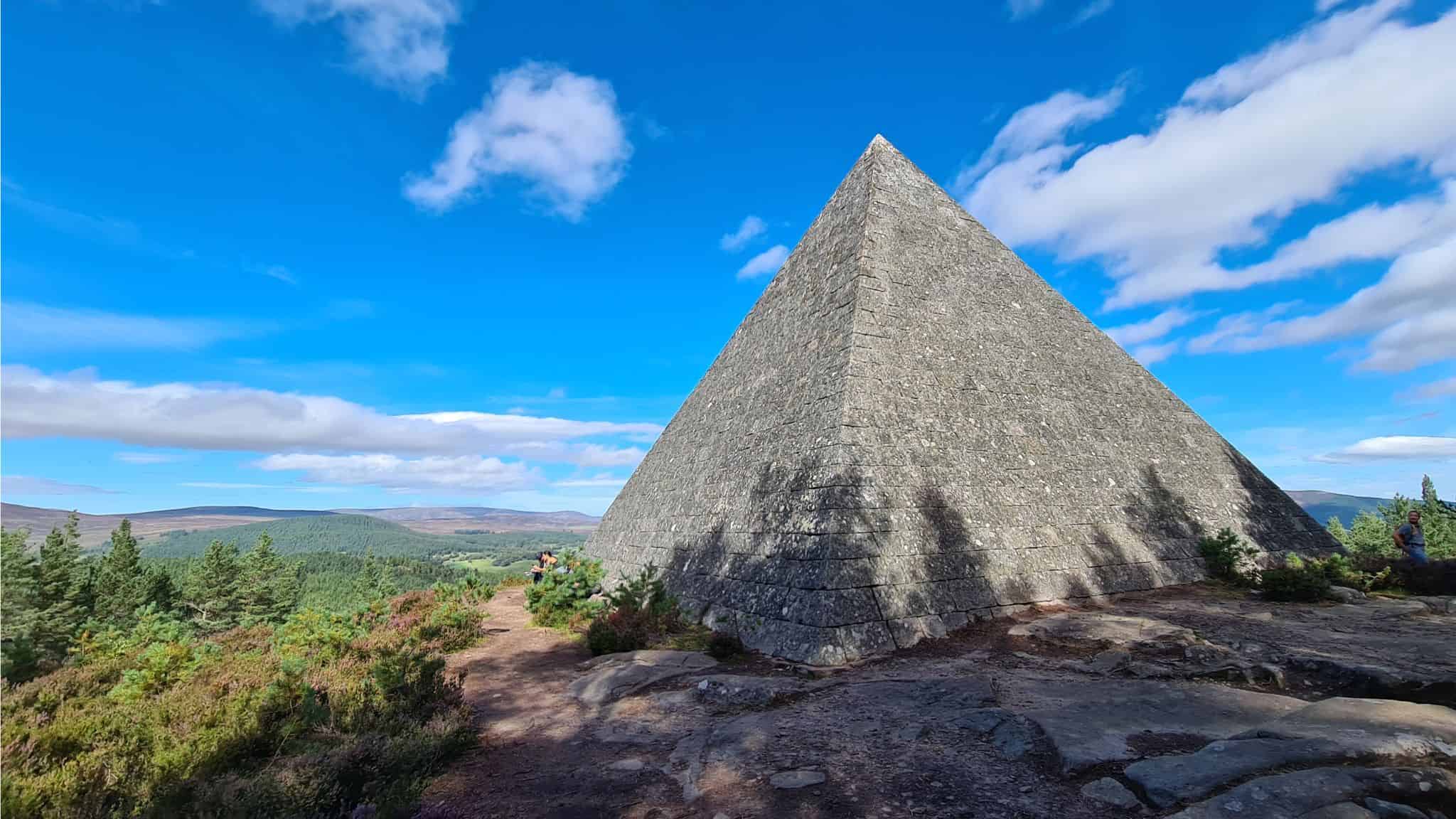
Final Thoughts: A Pyramid in Scotland
The Prince Albert Cairn was a firm favourite with us. It is great, free place to visit for families looking to combine a beautiful hike through Scotland’s ancient pine forests with something a little quirky!
If you are in the area, it makes for a nice walk to the summit with great views of the surrounding countryside.
